John 5 loves guitars, and that’s an understatement. Get him talking about anything guitar-related—practicing, amps, picks, Telecasters, great players, recording, metronomes—and his passion is palpable. He’s sincere, open, and oozes an almost childlike excitement. And he isn’t cynical or jaded, although as an industry veteran you’d expect him to be. He loves music. He loves guitar. And except for references to B-grade horror films that pepper his conversation, that’s about it.
John 5 is consistent, too. The music and TV shows that inspired him as a child—bands like Van Halen and Kiss, and the variety show Hee Haw, which featured country stars Buck Owens and Roy Clark—continue to inspire him today. He draws from their deep wells and pays homage in his songwriting and soloing.
But don’t think he’s stuck in the past or rests on his laurels. John 5 may be a world-class shredder, but he also searches the internet for new tricks and techniques—and then learns them, practices them, and incorporates them into his playing.
And he does this almost every day.
To get a taste of how much guitar he plays, check out his Instagram feed (john5official). It’s filled with video clips—sometimes filmed by his children—of him at home. Most feature him sitting on the couch with his wife and running through impossible riffs at blistering speeds. His wife is usually preoccupied with something else, because that’s life with a guitar-shredding maniac, and the clips end when his cat or someone distracts him.
And John 5’s passion isn’t limited to just playing guitar. He also loves owning guitars. He owns hundreds of instruments, including a Telecaster for every year starting with 1950, and most of his guitars are in pristine condition. “I have a collective soul,” he says. “I really love clean guitars. Some guys say, ‘I don’t care if it’s got belt rash or checking or a changed pickguard or pickups,’ but I love everything original. I took my time and it is a really good investment, too. Luckily, I am not a really big amp guy.”
John 5, born John Lowery, earned his moniker in the late ’90s when he joined up with Marilyn Manson. By that point, he’d already worked with David Lee Roth, Rob Halford, Rudy Sarzo, and many others. Following Manson, he joined Rob Zombie’s band—where he still is today—and released his first solo album, Vertigo, in 2004. His eighth, Season of the Witch, has just come out.
John 5 uses his solo albums to showcase his mastery of diverse styles, although his standout non-metal style is country. He’s as comfortable fingerpicking, mimicking a banjo, and executing complex chord/melody arrangements as he is doing sliding arpeggios, sweep picking, and 7-finger tapping. That versatility has served him well. In addition to metal, his curriculum vitae includes recordings and tours with such diverse artists as k.d. lang, Lynyrd Skynyrd, Rod Stewart, and Meat Loaf.
We spoke with John 5 about his roots, practice techniques, learning disparate styles of music, using less distortion to get heavier tones, and how he created some of the crazier sounds on Season of the Witch. As you’ll see reading this interview, John 5’s excitement is contagious. He’s an amazing guitarist, but an even more inspiring person.
When I was prepping for this interview, I ended up falling down a Hee Haw rabbit hole.
Isn’t it great? I don’t know if you watched it when you were a kid, but it was great entertainment. And here’s the thing: Everything affects you when you’re a child. In my household, my dad would watch what he wanted to watch—and we had to watch what he wanted to watch—so he would turn on Hee Haw. But I’ll tell you, it really made a mark on me.
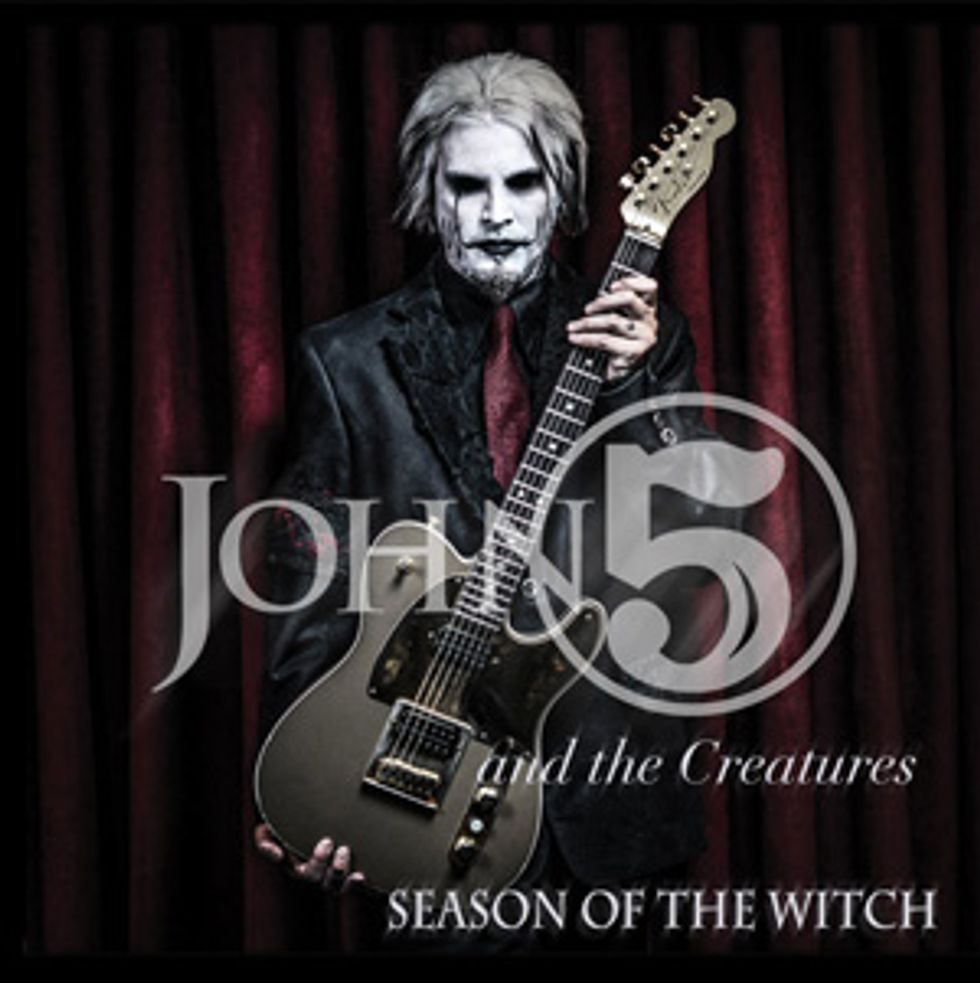
For his eighth solo album, John 5 made videos for all 13 of its songs, believing that YouTube is now where most young listeners discover music.
The reason I picked up the guitar was because of a kid [Jimmy Henley]—he was my age or maybe a little older—who was a banjo champion. He was performing with Roy Clark on the show. (Watch this 1976 performance here.) I think they were doing “Orange Blossom Special.” I was so intrigued and blown away by this kid who was close to my age and who was that good at something. I was like, “I want to play, too, but I want to play electric guitar.” I saw all the guys on Hee Haw playing these sparkly electric guitars. That is the reason why I picked up the guitar and that is the reason why I play a Telecaster—they all used Telecasters. I just thought all electric guitars looked like that.
Did you start out playing country music?
That’s what my dad enjoyed and that’s what I was introduced to very early on. Then it was the Monkees, because I loved TV. I was so into TV, just like any kid was. Hee Haw was on TV, the Monkees were on TV, and then my epiphanies went on from there.
The Partridge Family?
Heh, well [laughs] … and then it was Kiss and Van Halen and I got really into that.
Did you take lessons?
I always took lessons, ever since my very first year of playing guitar. My hands are small, but I wanted to play so bad. True story: My left hand is larger than my right hand. It stretched so much that it’s weird, almost like a deformity. I was young and I was growing, and my left hand is larger because I wouldn’t stop playing.
Did you learn the basics of theory and how to read music?
Yes, I did. That was part of the teacher’s regimen. I had to read, and then in school I had to do it. I’ve used it to my advantage, but I don’t use it as much as I would like to. It comes up every little once in a while, but not as much as you think. Whenever it comes up, I dust my reading off and it really helps out.
What are some of the things you did, or still do, to develop your skills and keep them up?
When I was younger, I was learning this stuff, but then I would forget it because I wasn’t playing it every day. I was getting to the point where I wasn’t using the things I’d been learning. So I would come up with these licks, or get influenced by people, or learn what they were doing, or try to do new stuff, and I’d weave that into my instrumental songs, which I play all the time. I have an arsenal of around 1,000 licks I will play every day. Sometimes I’ll do a 6-finger or 7-finger tapping thing, or behind-the-nut bends, for a whole song, or I’ll do banjo rolls, but it is this whole arsenal of licks that I play every day and that I’ll never forget because they’re in my songs.
Also, I’ll surf YouTube or Instagram. It’s incredible the tools that are available now. You’re seeing these players all over the world and you’re like, “Now that is cool. That’s inventive.” There is a whole world out there of crazy, inventive guitar players. I’ll look at that and turn it into my own thing. I put it into my own songs and practice it, because I think inspiration is one of the most important things there is.
His look may take visual clues from the Joker, but John 5’s heart is in Kornfield Kounty, the mythical home of the TV variety show Hee Haw, where he first saw speedy country picking done on Telecasters. Photo by Debi Del Grande
Are you constantly learning new licks and adding them to your arsenal?
Every day I’m doing fun, new, exciting things that inspire me to play. It’s great—I love it. I am so excited. I have been playing for a zillion years and I’m just so fired up about it.
Do you work with a metronome?
I always have a metronome. I have it in my phone and I always have a metronome going.
Do you put the click on two and four, or use the metronome to figure out different polyrhythms and things like that?
You know, it’s funny, but I don’t do that. To be completely honest, I don’t really like it when it is all crazy rhythms and it is confusing. I don’t want it to be confusing to the listener. I mean, what I am doing is insane. It is crazy guitar playing, but you can still tap your foot to it. Even though the notes are a zillion miles per hour, you can still find the one. I think that is important to the crowd. I’m just putting myself into the audience’s shoes and you want to keep it to where you can still tap your foot.
So odd meters are not your bag.
It’s not my bag. But maybe I’ll get into it. I have a song called “Guitars, Tits and Monsters” off the new record. The intro part is in seven and then we go into four. But that’s about it. I don’t know why I haven’t gotten into it, but you know what? Who knows what is going to inspire me tomorrow—maybe I’ll totally get into it.
Do you spend time working on different feels, like jazz, reggae, or funk?
I love it. I love Western swing. I love cool, old bebop jazz. I love James Brown-type stuff. If it’s well done, man, I can appreciate it. Like in “Guitars, Tits and Monsters,” it’s got that cool James Brown thing. And hopefully, because this is what happened with me, I’ll inspire some kids on the way. That’s what makes me happiest, if I can inspire some people with this cool music that inspired me.
Let’s talk about your picking. You have a pretty wide sweep when alternate picking. How do you keep from bumping into the other strings?
This is strange and will hopefully make sense, but my brain doesn’t have to think about my left hand that much. But my brain does concentrate on my picking hand. I just really focus. You know when you’re playing and you’re like, “Did I forget to turn the water off?” Or “I wonder what my girl is doing right now?” Or “Did I feed the dog?” When you’re playing, you think about things like that. But when I focus hard and concentrate, that will make my picking really, really clean.
Do you practice with an amp or without an amp?
I have to practice with an amp because I think it is so important. When I was little and I was playing all the time, like at 11 or 12 years old, I sometimes wouldn’t practice with an amp because my family would be around and we’d be watching TV or something. Later, I would plug in and I would be like, “Hey, why don’t I sound as good with an amp? It doesn’t sound that good now.” I was getting lazy and I was thinking I was playing well, but I wasn’t. Now every time I have a guitar in my hands, I have an amp plugged in. I have those little battery-powered Marshalls when I’m on the road or on the tour bus or backstage. I feel bad for Rob Zombie and all the band members because I’m playing all the time. It must drive them crazy—especially in the hotel rooms. When we book hotel rooms, we’re usually right next to each other. They’re so sweet, they don’t say anything, but they’re like, “I heard you playing all night.” Because I always use an amp.
In other words, not using an amp masks imperfections. Having the amp lets you hear what you’re really doing.
Yes. Yes. Yes. Yes. Yes. That is exactly right. Always. It will make you stronger. Even if you just have that battery-powered Marshall or Fender—you know the ones I’m talking about? It doesn’t have a lot of gain, but you start shredding on that with just a cord and a guitar and see how it sounds. That will really wake you up in the morning, to see what you sound like with just the clean tone, a cord, a guitar, and a pick.
John 5's Gear
GuitarsAn exhaustive assortment of vintage and Fender Custom Shop Telecasters
Amps
Marshall JCM900 heads in various colors
Marshall 4x12 cabs
Effects
Boss SD-1 Super OverDrive
Boss NS-2 Noise Suppressor
Boss DM-2 Delay
Boss TU-2 Chromatic Tuner
Strings and Picks
Dean Markley John 5 Signature sets (.009–.042)
Pick Guy picks (assorted graphics, based on Fender Heavy)
Pig Hog guitar cables
How did you develop your fingerpicking chops and who were some of your mentors?
I really loved Brent Mason and, of course, Roy Clark and Chet Atkins. But the main one for me was Jerry Reed. I do a cover of “Jiffy Jam” and I also do a cover of “Jerry’s Breakdown.” There are some great fingerpickers out there, and that is a whole other world from what I’m doing. It is so different from shredding and all that stuff—which is great.
Do you use nails or the flesh of your fingertips?
I use just the flesh of my fingers. I do it that way and it has been practice, practice, practice. Before I started doing my instrumental work, I was just out of Marilyn Manson and I was like, “What am I going to do?” I wanted to put out a guitar record, because no one knew I could play anything more than “Sweet Dreams.” So I made a guitar record, kind of just for my friends, but I wanted to do it to be different, because we already have “these guys” over here. We don’t have a guy who is doing that stuff, but then also does the Western swing or that kind of thing on a record. I was like, “You know what? Maybe I’ll just be myself.” I was raised on that stuff and I look like a complete crazy person, but that’s really who I am. It was so different that it worked and I am still doing it today. I think it’s because the fans know that it is so real.
Metal and country don’t have much in common harmonically. Metal is usually more modal and country has many more chord changes, similar to jazz. Have you spent time learning changes and working on more advanced chord theory?
Absolutely—100 percent. Like I was saying before, it is a completely different world. It’s like if I started talking Japanese right now. You’d be like, “What? I don’t understand what you’re saying.” I love things like that. I want to learn everything I can learn. You can do Rubik’s Cube and master it, but you will never, ever meet a master of the guitar, because it is impossible. That’s why I love all these different styles, like jazz, and all the different chords and the theory behind it. It’s just fascinating.
Do you play other instruments, like banjo or mandolin?
In the song “Black Grass Plague”—the first song on the new record after the intro—at the end I play guitar, then I put the guitar down and pick up a mandolin, then I put down the mandolin and pick up a banjo. The reason I did this … now you must look this up. It is so important to check this out because this is something that inspired me, and you’ll understand—it’s a guitar player by the name of Joe Maphis.
“Pickin’ and Singin’”—I’ve seen it. (View this vintage TV performance here.)
Yes! “Pickin’ and Singin’”—that’s what inspired “Black Grass Plague.” How great is that?
It’s amazing.
It is amazing! And when I do it live at my shows, people lose their minds. It is just fun. So yes, I play mandolin and banjo.
“I saw all the guys on Hee Haw playing these sparkly electric guitars and that’s the reason why I play a Telecaster. I just thought all electric guitars looked like that.” Photo by Tim Bugbee
Tell us about your new Telecaster made by Alex Perez at the Fender Custom Shop.
He just made me this guitar and you guys are the first to hear about it. It’s based around a Telecaster Deluxe—you know, those ones with the big pickguards? If you look at an old 1973 Telecaster Deluxe, you’ll see what I’m talking about.
Is it going to have the headstock with the three tuners on each side, like your most recent signature Tele, or does it have the standard Telecaster headstock?
The standard Tele headstock. I threw everybody off [with the other one]. Just a gorgeous guitar, a real striking instrument. What else can I tell you about it? It’s black and gold, and it’s got the kill switch. I have the toggle switch up top and two humbuckers.
DiMarzio humbuckers?
Yeah, the D Activators. I’m really psyched about this guitar—it’s a monster. I use it on the album.
Let’s talk about your tone. Do you get your distortion from your amp?
I have a little distortion from my amp, not too much. I never want it to sound—how do I explain it? It’s like trying to describe the color blue. I never want to have my guitar sound noisy and shitty. When I was a kid, I would go see AC/DC or Cheap Trick or Heart, and it was so clear. I asked my guitar teacher about it and he said, “It’s because they don’t turn their distortion up all the way. They have their distortion pretty low. When they do leads, they just press on this overdrive pedal.” I was like, “Okay,” and that is still what I do today. My distortion sound is coming from a Marshall with not a lot of gain. It is just enough. For the leads, I have my Boss Super Overdrive up.
And that’s it?
That’s it. My pedalboard … I think I pay my guitar tech way too much, because a child can run this thing. I’ll play through anything—just give me a guitar and a pick. We were on tour and playing at Irvine Meadows, a huge, massive amphitheater. It was sold out and everybody under the sun was there—and I had no amps. We were in Phoenix the night before and something happened. I don’t know if they got overheated or something. We were hours before we were going on and my tech was freaking out. I was like, “Dude, don’t freak out, just give me anything.” We borrowed amps from Korn.
still find the one.”
And you sounded the same?
Yeah, it just sounded like me. No one knew the difference. Rob asked, “How was the show for you?” I said, “Fine. It was great.” I’ll play through anything.
How are you getting those heavy, crunchy rhythm sounds? Are you still not using much gain?
Yeah. Let’s say I’m playing a D. What I’ll do is I’ll play the low fifth, which is the A on the E string. You barre your finger over that A and you get that low fifth, and it really sounds chunky and heavy. Another trick I’ll do: I’ll tune the E string down to an A, so you will have a low A with the octave A. It sounds so heavy you won’t even believe it. But you can’t have a lot of distortion, because then it will sound messy.
So the less distortion, the heavier it sounds?
Yes, because it won’t sound noisy. If you attack the strings the right way, it will sound so good and heavy. Listen to “Sabbath Bloody Sabbath.” It doesn’t sound noisy, it just sounds awesome. And there’s not a lot of gain on that.
Do you have specific guitars and amps you use in the studio?
I usually take my Marshall JCM900s and just play. It’s what I use live. I’ll have one head there and I’ll do most of my instrumental stuff on my gold Tele.
Do you stand in the room with your amps or have them isolated somewhere else?
I usually have them in the live room. Sometimes I’m in the live room, but most of the time I play in the control room with my pedalboard at my feet.
Do you track live as a band or is it one piece at a time?
Me and Rodger [Carter, drummer] will track together and then Ian [Ross] will come in and do his bass parts. We do it that way because you always have a problem with bleed.
The album is minimal in terms of overdubs. Do you just do a lead and a rhythm part and not many other overdubs?
There’s not that much rhythm, and the reason is I want the record to sound live. When you see us play live, it sounds exactly like the record. When I would go see bands, like Rush or the Police, I would be like, “It sounds just like the record.” And I loved that.
YouTube It
Roll over Joe Maphis, ’cause John 5’s movin’ in. In this live performance of “Blue Grass Plague,” a song from Season of the Witch that was inspired by the legendary country picker, John 5 absolutely rips on guitar, electric mandolin, and banjo-guitar.
On some songs, like “Black Grass Plague,” there are a few leads that are harmonized. Are those live, too?
No, I’ll overdub harmonies and things like that. “Season of the Witch” has a lot of overdubs. I made that song heavy and crazy with all the harmonies and all the weird sounds. All those sounds are made organically, too, and not with pedals.
It’s just guitar and amp?
Yeah. I put the toggle switch on the neck pickup and then hit my low E string against the pickup. You can hear that in the breakdown before the solo. It creates this very odd sound and I made a rhythm out of it.
On “Making Monsters” there’s something that sounds almost like a Theremin. How are you doing that?
That is a red analog Boss delay pedal. I have it cranked and I’m making it talk with the knob. With this record, I made a video for each song. Once a month I put one up online, so you can see me doing this stuff.
What inspired you do make all these videos?
Everybody is just watching music nowadays. People aren’t even downloading anymore, let alone buying CDs. I have a young son and I get my information from him and his friends. They’re like, “We don’t download. That is old time. We just stream.” They just watch everything on YouTube.
I like the “Hell Haw” video, your tribute to Hee Haw.
It is my dirty version of Hee Haw. It was so much fun. People who had watched that show really got it, with the, “Hey Grandpa, what’s for supper?” The whole bit. They really enjoyed it. And all the dirty jokes. Just great shit.
Though currently playing industrial metal with horror filmmaker Rob Zombie, John 5 has collaborated with such diverse artists as David Lee Roth, Lynyrd Skynyrd, and k.d. lang. Photo by Debi Del Grande
Evil Henchman
In addition to high-profile gigs with Marilyn Manson and Rob Zombie, John 5 has an impressive resume filled with loads of songwriting and session work. Here, he shares a few highlights.
David Lee Roth
When I was recording with Dave it was tough. This was David Lee Roth—Steve Vai, Eddie Van Halen … and Van Halen were my heroes. I was making a record with Rob Halford at the same time. And Dave didn’t want me after that—he wanted me fresh. He said, “We’re going to record starting at 6 a.m.,” because I had to start recording with Halford at 1 p.m. or something like that. I said, “Okay.” We booked the studio at 6 a.m. I still remember it today—driving there, it was dark out, getting all my stuff. Before we started, Dave said, “If you can’t do it in two takes, you can’t do it. Let’s do this.” I was like, “Whoa.” And I'll never forget him saying that. That is probably how it was with Van Halen. They probably rehearsed so much, went into the studio, and just knocked it out. But we did it. It was really crazy.
Lynyrd Skynyrd
I was signed to Chrysalis Music Publishing and they said, “Lynyrd Skynyrd is making a record. Do you want to go down and write with Lynyrd Skynyrd?” I said, “Of course.” I know every Lynyrd Skynyrd lick there is. I went down to Nashville and, at that time, it was cold out, so I had a big black fur jacket on. I had no eyebrows. I was wearing two different colored shoes. My jeans were all weird. That’s just how I walk around. That’s how I go to Target or to the grocery store, too. So here I come. I went to where they were and there’s Lynyrd Skynyrd.
And they thought it was a joke—they thought someone was pulling a prank on them. I said, “I’m John. I’m here to write with you guys.” And I started to get that vibe, like, they thought this wasn’t real or something. You know when you get that vibe? So I started playing some Jerry Reed, some old Chet Atkins, and some of their songs. They were like, “Oh my God, this is great. We didn’t know. Sorry and blah blah blah.” I ended up writing six or seven songs on that record, God & Guns. I wrote songs on the next record, Last of a Dyin’ Breed, too. We have a great relationship.
k.d. lang and Larry Campbell
When I played with k.d. lang, there was this great multi-instrumentalist in her band named Larry Campbell. Larry played lap steel, pedal steel, mandolin, banjo, fiddle … all these instruments. Incredible. He would always practice and always play and I was so inspired by this guy. When I walked in, I did string skipping and all these sliding arpeggios. He was like, “Wait a minute. What the hell are you doing?” I said, “What the hell are you doing? This is great.” We got into what each other was doing because it was so different. Learning different things is so important. You think, “That’s something I really want to indulge myself with and dive into.”




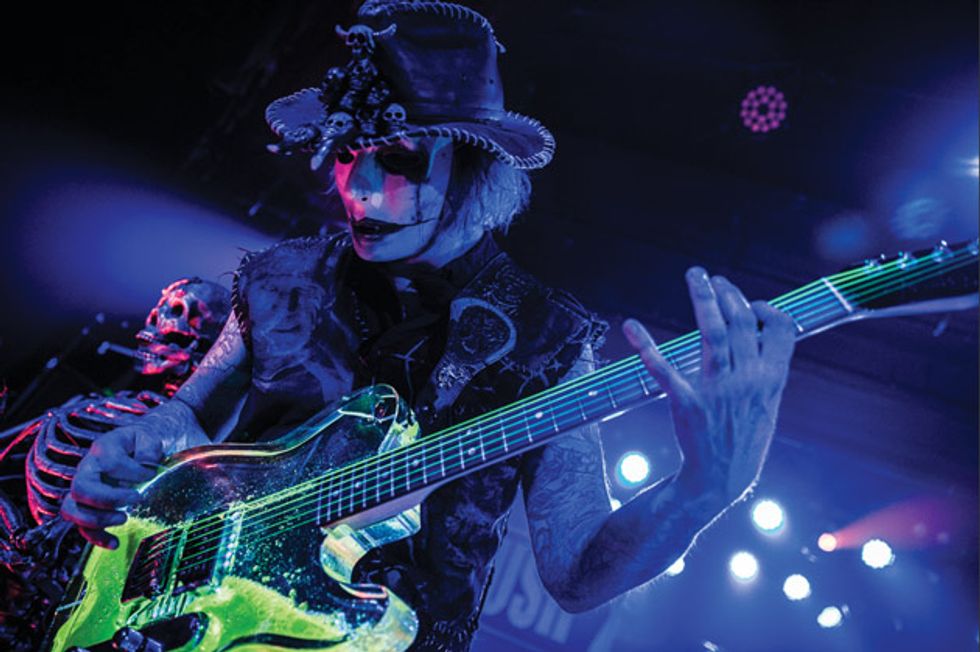

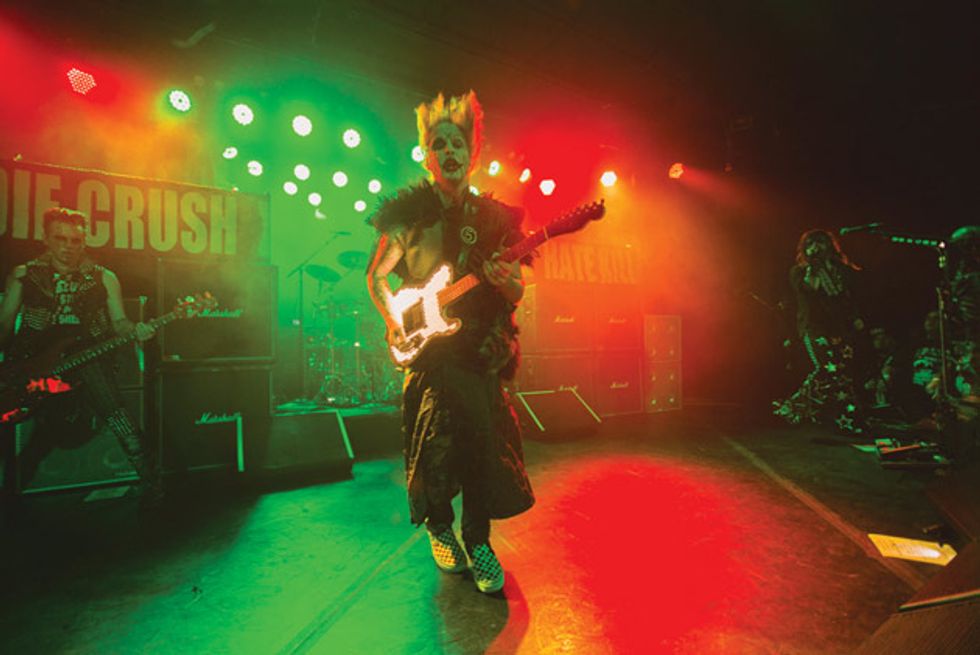






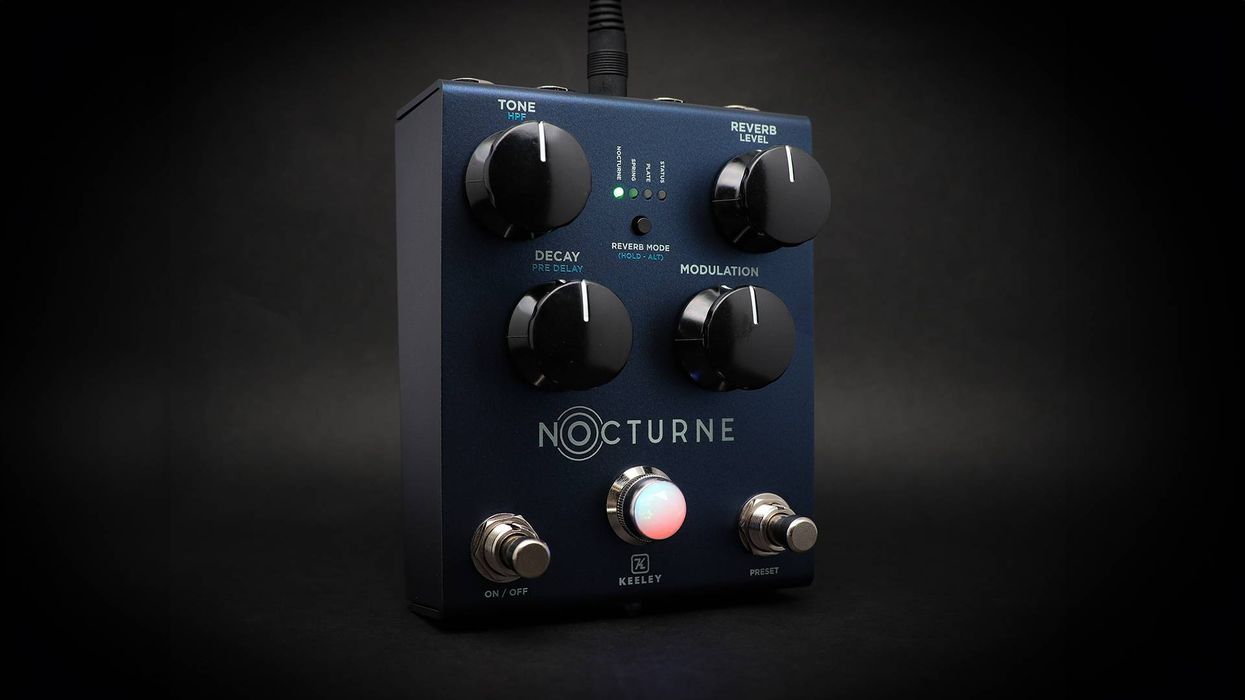

![Rig Rundown: Russian Circles’ Mike Sullivan [2025]](https://www.premierguitar.com/media-library/youtube.jpg?id=62303631&width=1245&height=700&quality=70&coordinates=0%2C0%2C0%2C0)
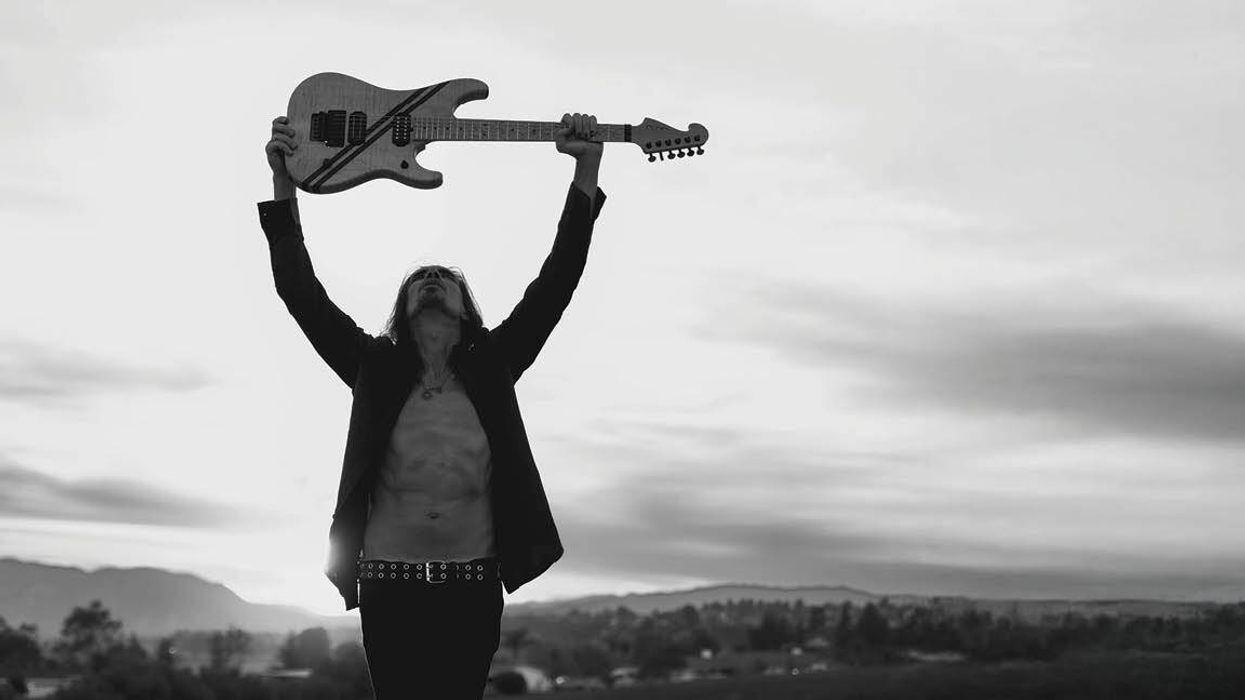











![Rig Rundown: AFI [2025]](https://www.premierguitar.com/media-library/youtube.jpg?id=62064741&width=1245&height=700&quality=70&coordinates=0%2C0%2C0%2C0)




















 Zach loves his Sovtek Mig 60 head, which he plays through a cab he built himself at a pipe-organ shop in Denver. Every glue joint is lined with thin leather for maximum air tightness, and it’s stocked with Celestion G12M Greenback speakers.
Zach loves his Sovtek Mig 60 head, which he plays through a cab he built himself at a pipe-organ shop in Denver. Every glue joint is lined with thin leather for maximum air tightness, and it’s stocked with Celestion G12M Greenback speakers.











